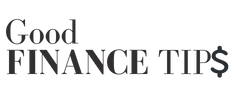Most everyone wants to set aside money and develop a sizable savings account, but life’s unexpected happenings can make it difficult to do so. Accordingly, while the oft-repeated advice of columnists and financial professionals–develop savings–is useful, it doesn’t provide any insight or guidance in terms of the process itself.
For those who’re serious about enjoying long-term financial security, the following tips and suggestions will serve as a solid foundation–a base upon which future prosperity can rest and grow.
Trim Discretionary Spending
Discretionary spending, or spending that covers non-essential goods and services, can tarnish an otherwise flawless budget.
While seeing a movie or grabbing a cup of coffee might not seem like a big deal, these expenditures add up with time. For instance, purchasing one $5 cup of coffee per day, perhaps in the morning, would cost $35 per week–or $1,820 per year. Cutting this expenditure’s frequency down to five times per week, for half the weeks in the year, would still produce a bill of $650.
This isn’t to say that one should forego all of life’s conveniences and pleasures. However, it is to say that freeing a budget from excessive spending is a tremendous way to gain stable financial footing. There’s no wrong way to go about this process. Stay encouraged and positive by remembering that $10 saved per day amounts to $3,650 saved at the year’s end.
Pay-Off High-Interest Debt
It helps to think of personal finance as a wagon–a wagon that’s traveling towards a destination called retirement. Upgrades and improvements to the wagon increase the speed and efficiency with which it moves, and inversely, cumbersome baggage and unnecessary equipment will slow–or even halt–its journey. Consider high-interest debt to be the heaviest thing for a wagon to hold.
It’s nearly impossible to steadily travel towards retirement if high-interest debt, especially that of a credit card, is brought along for the ride. Stated bluntly, debt holders need to buckle down, cut costs, and make the largest possible payments on their owed sums.
The faster debt is eradicated, the less money one will lose to interest. Remember that every debt payment is a step in the right direction.
Optimize Monthly Entertainment Subscriptions and Services
Month-to-month entertainment subscriptions are all the rage today, and for good reason: they afford subscribers quite a lot of content.
That said, monthly subscription fees quickly accumulate, and one would do well to reduce them. Spending $15 less per month will produce annual savings of $180, or more than $2,000 in a decade. Though these expenditures are technically non-essential, they’re popular enough to warrant their own description.
Consider cutting video-streaming services that receive minimal use. Customers, including many otherwise smart budgeters, often pay for services that they don’t really use. Also, leading platforms, including Netflix, Hulu, and HBO, allow subscribers to utilize multiple streams at once, even if viewers are watching different programs. Offer to share a service (for a portion of its monthly cost) with a friend and/or a coworker.
Millions of individuals still subscribe to satellite television, but there are much more efficient (generally and in terms of cost) services available today. Smart TVs, media-streaming sticks, video-game consoles, and many other devices, can provide access to YouTube TV, Hulu Live TV, Sling TV, and several additional television services. These services deliver the same live content as satellite television, in high definition, at a fraction of the cost. There aren’t any satellites, boxes, or contracts to speak of.
Film and television subscription services commonly produce overspending, but they’re hardly all the monthly entertainment services that can be evaluated; music services, loot-box services, video-game services, and basically any non-essential service that charges a monthly fee, are worth a look.
Open a High-Yield Savings Account
Investment advice has been intentionally avoided in this piece, simply because investment preferences and relative risk vary. It’s best for investment decisions to be made with the help of financial professionals.
However, one needn’t worry about risk with a high-yield savings account. Some local banks (and many online banks) offer high-yield savings options. These options are FDIC insured, just as other bank accounts are. But most banking professionals shrewdly figure that if they can get away with paying virtually no interest on clients’ savings, they might as well do so. Unfortunately, the vast majority of savers walk right into the trap.
With time, high-yield savings accounts’ 1.5-2% annual interest will add up. Even if a customer has a modest $10,000 in the bank, it’s hard to argue against receiving $200 at the year’s end, or $2,000 in a decade. (And that’s without factoring for additional savings!)
High-yield savings accounts carry no more risk than low-yield savings accounts, but they offer much healthier returns. There’s never been a better time than now to begin receiving interest payments.
Thanks for reading, and here’s to taking steps towards a brighter financial future!

